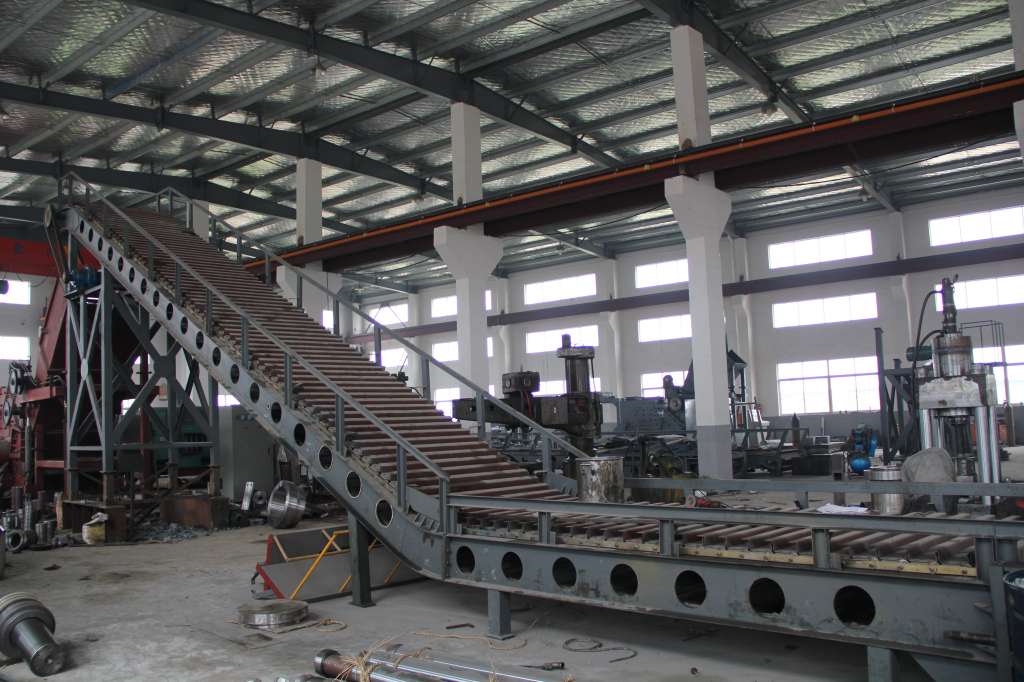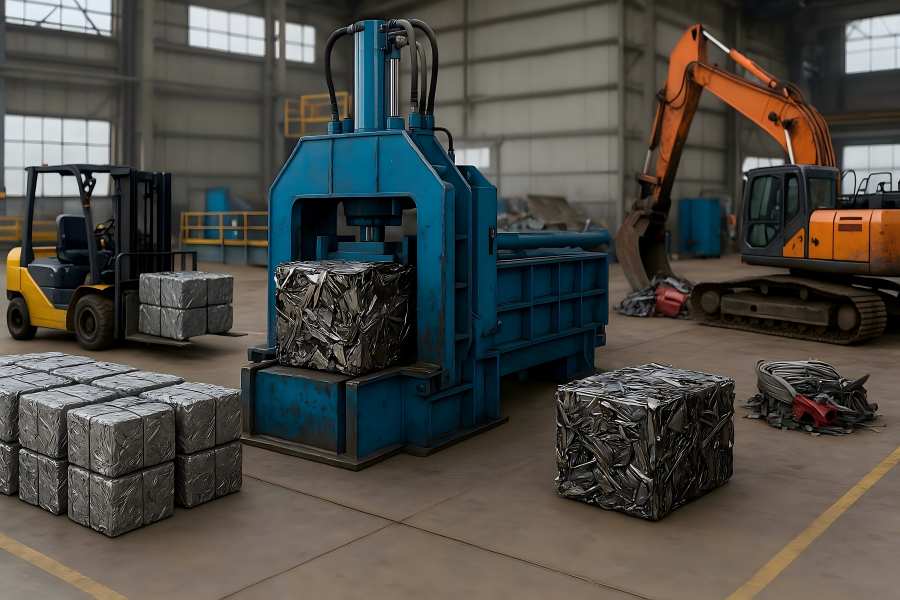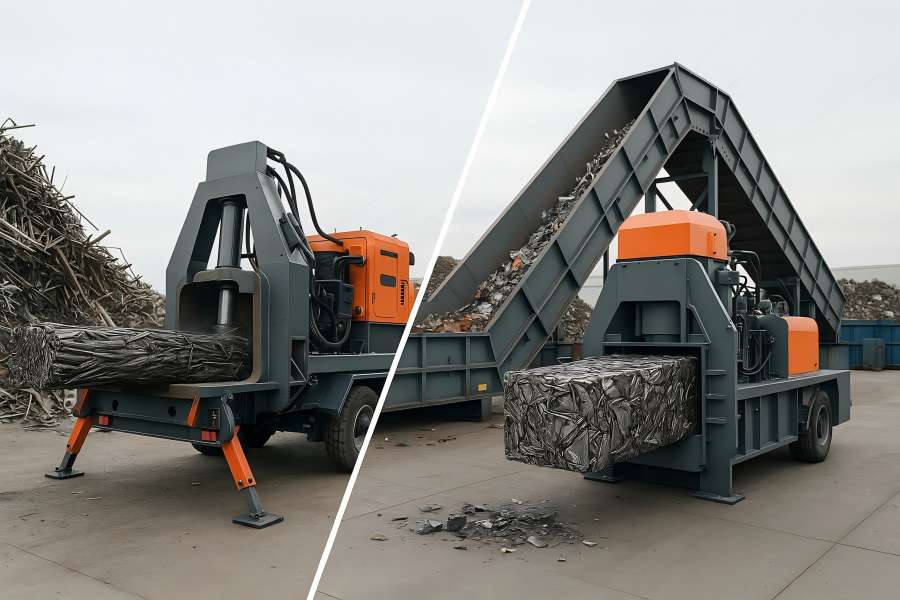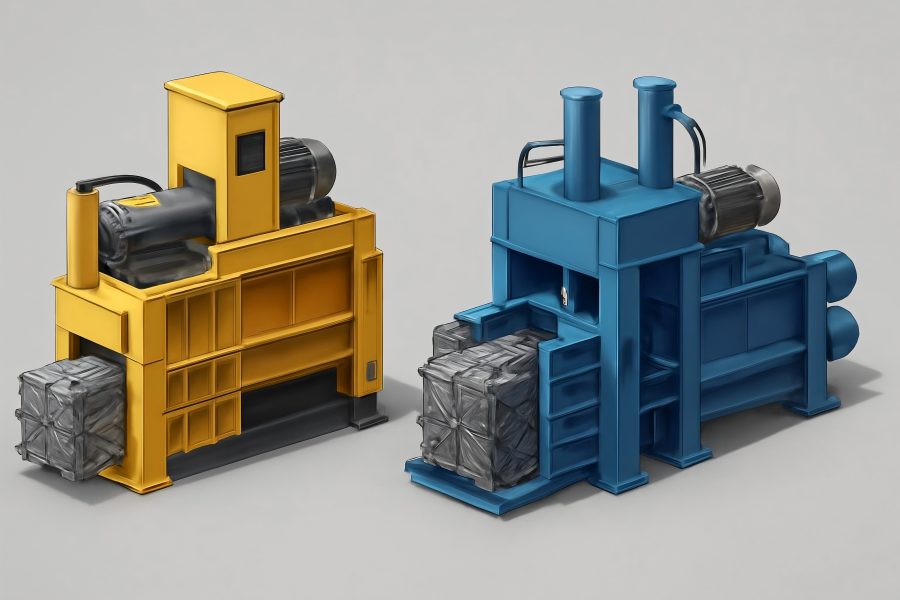In the dynamic landscape of modern recycling, scrap shredder lines have become indispensable. These robust systems not only reduce the volume of bulky metal waste but also unlock valuable materials for reuse, playing a central role in circular economy strategies.
Yet, behind their loud, rugged exterior lies a meticulously engineered process—from initial planning to full-scale operation—that demands significant investment, expertise, and coordination.
What is a Scrap Shredder Line?
At its core, a scrap shredder line is a mechanical process that takes large, mixed metal waste and transforms it into clean, sorted material fractions—typically ferrous metals, non-ferrous metals, and non-metallic residue. These systems are commonly used in facilities that process:
- End-of-life vehicles (ELVs)
- White goods (like refrigerators and washing machines)
- Demolition debris
- Industrial production waste
The main function of a shredder line is to size-reduce scrap and sort it using magnetic, eddy current, air, and visual separation methods. The result is a stream of recyclable commodities that can be fed back into manufacturing supply chains.
Primary Components of a Shredder Line
A fully functional shredder line comprises several integrated components. Here’s a breakdown of its most vital parts:
a. Infeed System
Heavy-duty conveyors, cranes, and loaders manage the delivery of scrap into the line, ensuring even feeding and reducing bottlenecks.
b. Primary Shredder
Usually, a hammermill or rotary shear, the shredder applies high-torque impact forces to break down the scrap into smaller, more manageable pieces.
c. Magnetic Separator
Ferrous metals like steel and iron are extracted using large overband magnets or drum magnets, often immediately after the shredding stage.
d. Eddy Current Separator
Non-ferrous metals such as aluminum, copper, and brass are separated by creating magnetic repulsion fields.
e. Air Classification Systems
Cyclones and air knives blow lighter materials (fluff, rubber, plastics) into separate containers.
f. Dust Suppression Systems
Critical to regulatory compliance, these include bag filters, mist cannons, and negative-pressure enclosures to manage airborne contaminants.
g. Control Systems
PLC and SCADA interfaces monitor real-time performance and ensure safety, synchronization, and process automation.
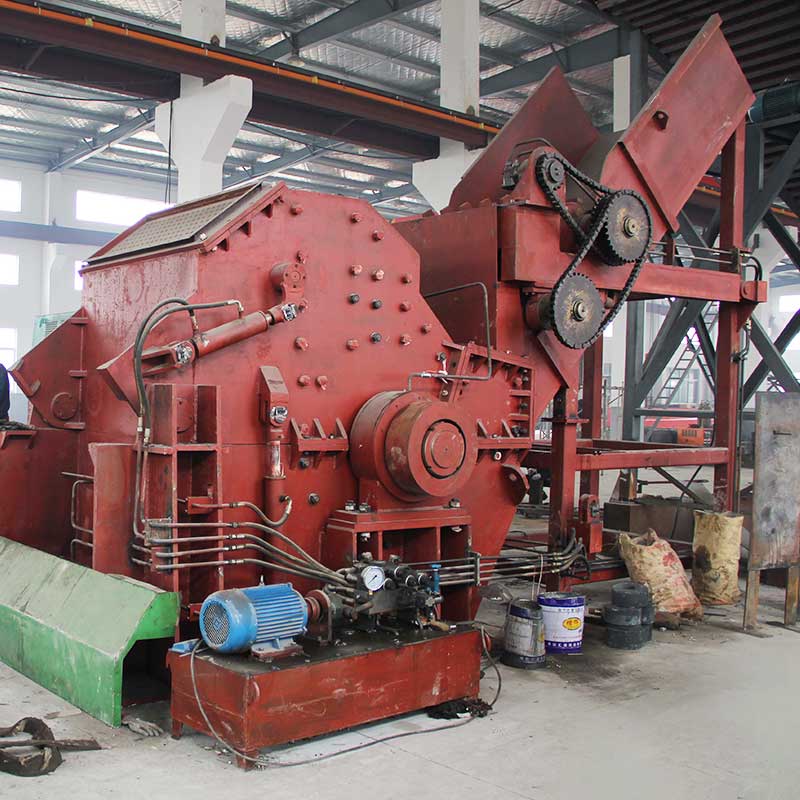
Setup Phase: From Idea to Installation
The setup phase of a scrap shredder line can take 12 to 24 months and involves several critical decisions.
A. Feasibility Assessment
A robust business case starts with understanding local scrap availability, transportation logistics, energy infrastructure, and potential revenue from metal recovery. Operators must evaluate input volumes, desired throughput, and local or international demand for recycled metals.
B. Site Selection
Ideal shredder sites require:
- Minimum 3–10 acres
- Proximity to industrial zones or ports
- Access to high-voltage electricity
- Adequate drainage and road networks
- Sufficient buffer zones for noise and dust
C. Environmental and Legal Permits
A major part of the setup involves obtaining:
- Environmental Impact Assessment (EIA) approvals
- Air and water emissions permits
- Noise compliance certificates
- Building and utility permits
- Fire and occupational safety licenses
Failing to account for local regulations can cause costly delays and retrofitting down the line.
D. Equipment Procurement and Customization
Suppliers offer modular shredder line components, often tailored to input types and desired purity levels. Procurement involves:
- Sourcing primary shredders
- Selecting appropriate magnets, ECS, and air classifiers
- Evaluating automation and energy-efficiency add-ons
Infrastructure and Installation
A. Civil Engineering Work
Before installation, heavy foundations are laid to support the shredder and conveyors. Other installations include:
- Transformer substations
- Water recycling systems
- Offices, control rooms, and workshops
- Perimeter fencing and surveillance
B. Machinery Installation
The components are assembled, aligned, and bolted. Sensors and driving systems are next calibrated, followed by power and control connections.
C. Commissioning
Test runs (dry and wet) are conducted to verify:
- Rotor balancing and throughput
- Material flow logic
- Sensor and alarm functionality
- Magnet and separator calibration
During commissioning, performance data is collected and analyzed to fine-tune system parameters.
Running the Shredder Line: What It Takes
Operating a shredder line goes beyond feeding in metal and collecting output. It involves a tight integration of technology, human expertise, safety protocols, and continuous monitoring.
A. Workforce and Roles
A typical shredder facility employs:
- Operators (machine and control room)
- Maintenance technicians
- Environmental compliance officers
- Safety supervisors
- Quality control inspectors
B. Daily Operations
Key tasks include:
- Equipment startup and system diagnostics
- Material inspection and loading
- Monitoring shredder performance metrics
- Organizing sales logistics and material outputs
Automation tools lessen human error and operator fatigue.
C. Maintenance Protocols
Preventive maintenance is vital to avoid unplanned downtime. It includes:
- Daily checks on belts, blades, and bearings
- Weekly lubrication and alignment
- Monthly part replacements (e.g., hammers, liners)
- Yearly overhauls
Digital maintenance tracking systems help forecast wear and order spares in time.
Safety and Compliance
Shredder lines involve extreme forces, noise, and fire hazards. Top safety practices include:
- PPE enforcement (helmets, gloves, ear protection, goggles)
- Emergency stops at each stage
- Fire suppression near motors and conveyors
- Routine safety drills and hazard training
- Lock-out/tag-out (LOTO) systems during maintenance
To remain compliant, regular audits and emissions testing are performed, especially for dust and VOCs (volatile organic compounds).
Financial Structure and Business Model
Capital Expenditure (CAPEX)
A complete shredder line setup may cost:
- Small-scale: $2M–$5M
- Mid-size: $6M–$10M
- Large-scale: $12M–$ 20 M+
This includes land, civil works, equipment, permits, and startup inventory.
Operating Costs (OPEX)
Recurring costs include:
- Electricity (especially for shredders over 2,000 HP)
- Labor and training
- Wear part replacements
- Water, dust suppression materials
- Insurance and inspections
Revenue Streams
- Ferrous scrap (~60–80% of output)
- Non-ferrous scrap (higher value per ton)
- Service contracts for toll shredding
- Potential sale of plastics or energy from fluff
- Carbon offset credits in some regions
Return on investment depends on metal prices, uptime, efficiency, and market access. Payback periods generally range from 3–6 years.
Technology Trends and Innovations
Shredder lines are evolving rapidly to meet efficiency and environmental goals.
A. Automation and AI Integration
- Smart sensors track real-time material flow
- AI algorithms optimize separator settings
- Predictive maintenance using vibration and temperature analytics
B. Energy Optimization
- Regenerative braking on motors
- Solar or hybrid backup systems
- Water reclamation loops
C. Enhanced Sorting Accuracy
- Optical sorters identify plastics, fabrics, or stainless steel
- Robotic arms automate the removal of oversized contaminants
Challenges Faced by Operators
Even the most advanced systems face daily hurdles:
Input Contamination: Improperly sorted input can damage equipment and reduce purity.
Noise and Dust Complaints: Require expensive mitigation systems, especially in urban areas.
Price Volatility: Global shifts in metal prices affect profitability.
Regulatory Uncertainty: Emissions or import/export rules may change quickly.
A resilient operation depends on continuous staff training, flexible equipment setups, and diversified sales channels.
Case Study: Urban Recycling Success Story
A recycling plant in central Europe installed a mid-capacity shredder line in 2022. Designed for 300 tons/day, the line includes:
- A 3000 HP hammermill
- Dual-stage ferrous and non-ferrous sorting
- Soundproofing walls and mist dust control
- Remote diagnostics and cloud-based performance monitoring
Results after 18 months:
- Output purity of 96% ferrous and 98% non-ferrous
- Revenue growth of 35%
- ROI projection: 4.2 years
Their success underscores the value of smart planning and advanced tech integration.
Conclusion
Building and operating a scrap shredder line is a major industrial undertaking. It requires a multidisciplinary approach that spans engineering, regulatory compliance, finance, and environmental management. When executed well, it not only delivers strong financial returns but also contributes meaningfully to global sustainability goals by closing the loop on metal use.

